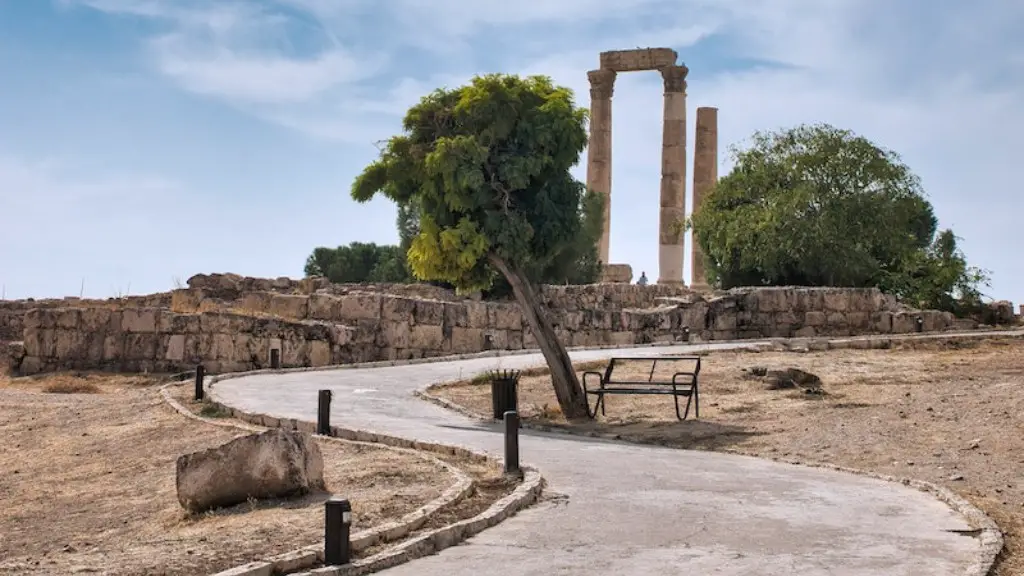The Roman criminal justice system was incredibly complex and used a variety of methods to punish criminals. Some of the more common methods of punishment included exile, fines, and death. Ancient Romans also used a system of public humiliation, called infamia, to shame and discourage potential criminals.
The ancient Romans used a variety of methods to punish criminals. These included things like flogging, branding, and beheading. More serious crimes were punishable by being thrown to the lions or other wild beasts, or by being burned alive.
What are the 8 forms of punishment in Rome?
There are eight kinds of punishment: fine, fetters, flogging, retaliation in kind, civil disgrace, banishment, slavery, death. Each punishment has its own merits and demerits, and each must be carefully considered before it is imposed.
Crucifixion is a method of capital punishment in which the victim is tied or nailed to a large wooden cross or beam and left to hang until eventual death from exhaustion and asphyxiation. It was used as a punishment by the Persians, Carthaginians and Romans, among others.
Crucifixion was a particularly brutal and agonizing form of execution, and was thus reserved for the most serious of crimes. The victim would typically be stripped naked and left to hang on the cross for hours or even days, slowly dying from exposure, dehydration and asphyxiation.
While crucifixion was certainly a cruel and brutal punishment, it was also considered to be a very effective deterrent to crime. The public nature of the execution also served as a warning to others considering committing similar crimes.
What did the Romans do to their prisoners
Prisons in the Roman Empire were often filthy, underground, and hot. Prisoners were often tortured into revealing information. However, during the later parts of the empire, Christian charity could help improve the lives of prisoners somewhat.
Punishment for treason during the time of Tiberius was death by beheading, in addition to the confiscation of property and complete civil disability. This meant that a traitor could not make a will, give gifts, or emancipate slaves.
What was the most brutal Roman punishment?
The Romans were known for their brutal punishments, especially for more severe crimes. Some of the most common punishments included putting out the eyes, ripping out the tongue, or cutting off ears. The death penalty could also include being buried alive, impaling, or crucifixion. The Romans did not hesitate to torture before putting someone to death.
Violence played a significant role in Roman identity, and images of war and violence were pervasive throughout the Roman world. The myths and history of Rome are filled with brutal acts of rape, fratricide and war. For the Romans, violence was a way of life, and it was an integral part of their identity.
What was the most painful execution method?
Flaying—or skinning—was perhaps the most painful of all ancient world execution methods because of its slow process. The victim was first stripped, and their hands and feet bound to stop any movement. A sharp blade was then used to cut off the victim’s skin, starting from the extremities and working in. The skin was then peeled back and the victim left to bleed to death. This was an incredibly painful and cruel way to die, and was reserved for the most serious of criminals.
Sulla’s law was enacted in order to punishing poisoners in a more severe manner. According to this law, patricians were decapitated, plebeians were thrown to beasts, and slaves were crossed. Counterfeiters were also punished by this law, but they could have been burned instead. Political criminals were also subject to this law, and father killers were most often drowned in a tied sack.
What was the most common Roman punishment
Whipping and fines were the most common punishments during the slave trade. Wooden shoes were sometimes placed on the feet of prisoners, making escape difficult. An enslaved person could be forced to carry a piece of wood around their neck that stated their crime.
The crucifixion of Jesus was a unique and revolutionary event in history. It was a form of execution that was considered so humiliating that if you were a Roman citizen, you couldn’t be crucified, no matter what the offense. The fact that Jesus was crucified shows that he was completely innocent and that his death was a travesty of justice. The crucifixion of Jesus also shows the amazing love of God, who was willing to sacrifice his own Son for our sake.
Did the Romans crucify thieves?
It is unusual that Jesus was nailed to the cross because most criminals were executed by being tied to wooden crosses. The fact that he was nailed suggests that he was seen as a more serious criminal than others.
Even though the Roman society had developed significantly, the average Roman still lived in squalor. Their favorite pastimes often involved brutal violence, which was a stark contrast to the development of their society.
What is the most cruel punishment in the world
The death penalty is a highly controversial topic and there is much debate surrounding it. There are many who believe that it is a cruel and inhumane punishment and that it does not deter crime. There are others who believe that it is a just punishment for certain crimes.
There are a number of different methods of execution used around the world, including hanging, beheading, stoning, electrocution and shooting by firing squad. In many cases, these executions are carried out in a very public manner, with public hangings in Iran or live broadcasts of lethal injections in other countries.
The death penalty is an emotive and complex issue. There is no easy answer as to whether it is a just or effective punishment.
The Huns were a nomadic group that originated in Central Asia. In the 4th century, they began to expand westward, eventually reaching the Roman Empire. The Romans were already fearful of the Huns, having heard about them from the Germanic tribes who had already been raided by the Huns. The Huns’ foreign appearance and unusual customs only intensified the Romans’ fear of this group. In the 5th century, the Huns ravaged the eastern Roman Empire, causing great destruction.
Why were Roman soldiers so feared?
The Roman Army was one of the most successful in the history of the world and its soldiers were rightly feared for their training, discipline and stamina. As a result, the army was a major player in Roman politics and maintaining its loyalty was an essential task for any Emperor. The reasons for the army’s success were many, but its discipline and training were undoubtedly two of the most important. The Roman Army was also highly efficient in its use of resources, which made it extremely effective in battle.
There are many reasons why Emperor Caligula is remembered as the cruelest Emperor. One reason is that he was mentally ill and became a ruthless, wanton killer of Roman citizens, including even his family. No one was safe from his cruelty. Another reason is that he was one of the most corrupt Emperors, and he used his power to exploit and mistreat his subjects. He was also known for his outrageous and decadent behavior, which shocked and disgusted many people. In short, Emperor Caligula was a sadistic and depraved ruler who brought terror and misery to the people of Rome.
Warp Up
There is no one answer to this question as the punishment for criminals varied depending on the severity and frequency of the crime committed. For example, lesser crimes such as theft or property damage might be punished with fines, community service, or exile, while more serious offenses like murder could be punishable by death.
The ancient Romans used a variety of methods to punish criminals. These included incarceration, fines, banishment, and death. The punishment depended on the severity of the crime and the criminal’s previous record.





